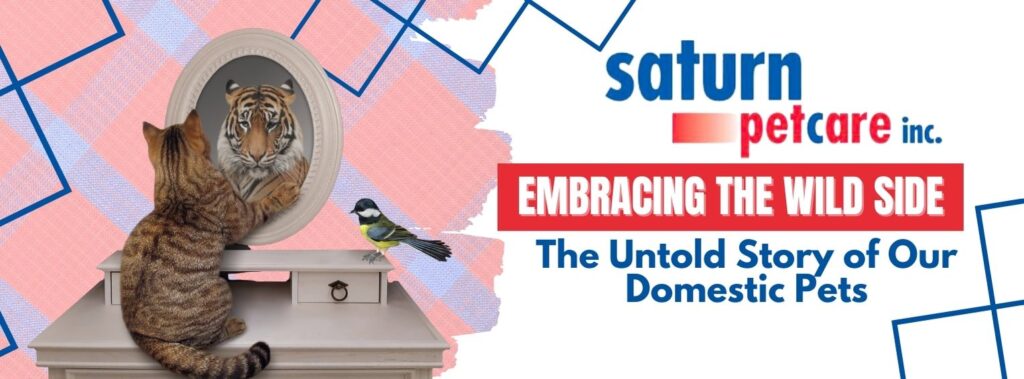Embracing the Wild Side: The Untold Story of Our Domestic Pets

Have you ever watched your cat crouch and pounce on a toy mouse and wondered, “Is Mr. Whiskers practicing for a big hunt?” Or maybe you’ve caught your dog howling at the moon, channeling their inner wolf. It turns out, these aren’t just quirky behaviors; they’re echoes of their ancestors’ wild ways. Let’s embark on a fun and fascinating journey to discover the wild side of our beloved domestic pets.
From Wild Wolves to Wagging Tails: The Tale of Dogs
The story of man’s best friend starts at least 15,000 years ago, and possibly as far back as 40,000 years, according to some genetic whisperings. Wolves, drawn by the tantalizing smells of human campsites, slowly transformed into the diverse array of dogs we know and love today. This transition from fierce predator to faithful companion wasn’t overnight; it was the beginning of dogs’ journey from the wild into our living rooms. Yet, despite their cuddly demeanor, our canine pals haven’t forgotten their roots. That playful chase in the park? It’s a nod to their ancestral hunting and pack dynamics.
Purring Predators: The Domestication of Cats
Cats slinked their way into human hearts around 9,000 years ago in the Near East. As humans settled and stored grain, they unwittingly set the buffet table for rodents, which in turn attracted wildcats. This mutually beneficial relationship blossomed over time, but don’t be fooled by a purring kitty; that graceful leap onto your lap is powered by the same instincts that once made them formidable hunters. Today’s domestic cats still share a striking resemblance to their wildcat ancestors, proving that while they may enjoy the comforts of home, their predatory prowess remains undiminished.
Horses: From the Steppes to the Stables
The majestic horse galloped from the vast steppes of Central Asia into human history around 4,000-3,500 BCE. Initially raised for their meat and milk, their speed and strength soon turned them into invaluable assets for transportation and work, forever changing the course of human civilization. Despite their domestication, horses retain a strong sense of social hierarchy and freedom, qualities that remind us of their wild origins.
Feathered Friends: The Allure of Birds
Birds, particularly parrots and pigeons, have been admired for their beauty, mimicry, and homing abilities, leading to their domestication across various cultures. These avian companions, with their ability to mimic human speech, remind us of the wild calls and songs of their forest-dwelling kin, while their vibrant plumage harks back to a time when it was used for more than just attracting human admirers.
Small Mammals: The Cozy Companions
Rabbits and guinea pigs, once sought after for food and fur, have hopped, and scurried their way into our homes as beloved pets. Their journey from wild to domestic is filled with tales of adaptation and charm. Yet, even in the safety of our homes, these small mammals display behaviors—such as burrowing and social grooming—that are direct links to their wild ancestors.
The Wild Within
Our pets’ behaviors often serve as windows into their souls’ wild past. The prey drive in dogs and cats, territorial instincts, and even social structures are all legacies of their untamed heritage. But domestication has also woven changes into the fabric of their being, from their reliance on us for care to the incredible diversity in temperament and appearance.
Embracing our pets’ wild side doesn’t just deepen our appreciation for them; it connects us to the rich tapestry of life on Earth, reminding us of the journey we’ve shared with these remarkable creatures. So next time your pet displays a flash of their ancestral traits, take a moment to marvel at the wild heart beating within their domesticated exterior. It’s a beautiful reminder of the natural world from which they came and the enduring bond we share with them.
